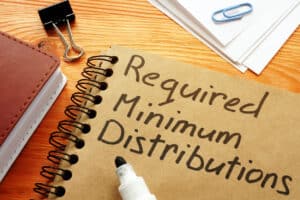The SECURE 2.0 Act was passed in late 2022. The purpose of this legislation, which is essentially an update to the original SECURE Act of 2019, is to facilitate a smoother process for businesses that are providing retirement benefits for employees. This law also makes it easier for employees to plan and save for the future.
Several of the changes ushered in by this new legislation weren’t part of the original 2019 law, and they will impact business owners. Here is what you need to know about the SECURE 2.0 Act and how it will affect your business.
This provision became effective in 2023, but it is still worth mentioning. Employers are now allowed to offer small financial incentives to boost employee participation in the retirement plans you offer. You can now offer employees low-dollar gift cards to encourage them to contribute to their retirement account.

The purpose of this change is to increase participation in retirement plans. The current setup where individuals must manually enroll in their employer’s retirement plan has reduced participation, especially for specific groups such as African American, Latino and low-wage workers. Expanding automatic enrollment should help a larger number of employees begin planning for retirement at an earlier age.
Under the terms of SECURE 2.0, beginning January 1, 2025:
Traditionally, employees with a Roth 401(k) plan had employer match funds added into a separate, pre-tax 401(k) account. Under the SECURE 2.0 Act, employees with the option of contributing to a Roth account can opt to have their employer match funds added into their Roth account instead of a separate pre-tax account.
If employees choose this option, their employer match funds will be considered earned income and taxes will be paid on those funds now. However, when employees receive distributions upon retirement, the money will be tax-free, as it is with a typical Roth IRA.
The SECURE 2.0 Act gives employees paying off student loans an ability to balance these payments with additional retirement savings. Effective at the start of 2024, employers can make a matching contribution into an employee’s retirement plan account when the employee makes a qualified student loan repayment.
Another provision of the SECURE 2.0 Act specifically benefits part-time employees. The law has shortened the time necessary before part-time employees can participate in company 401(k) plans. For years, part-time employees had to work a minimum of 1,000 hours in a year before they were eligible to contribute to their employer plan. This high threshold prevented many part-time employees from ever accessing retirement benefits.
Under the initial SECURE Act of 2019, part-time employees who worked at least 500 hours in three consecutive years were able to participate in their employer’s retirement plan using the plan’s salary deferral provision. The SECURE 2.0 Act has shortened this time period to two consecutive years.
While the provisions discussed above directly impact employers as well as employees, there are other provisions which may not impact your business, but still help employees in a variety of ways.

These changes help employees by giving them additional time to grow their retirement funds.
Individuals over the age of 50 will now have the ability to increase their catch-up retirement contributions. These catch-up contributions give people 50 and older the ability to exceed the annual limit for retirement contributions to make up for missed savings opportunities when they were younger.
In 2025, the catch-up contribution limit increases to $10,000 from $7,500 for 401(k) retirement plans.
Millions of 401(k) accounts have been lost track of, and this equates to roughly one trillion dollars in unclaimed retirement benefits. The SECURE 2.0 Act calls for the creation of a searchable database to help individuals locate their lost retirement funds. This database will be created within the next two years and will be stored at the Department of Labor.

The SECURE 2.0 Act addresses this issue in two ways:
The SECURE 2.0 Act is an expansive piece of legislation with many provisions that will impact both your business and your employees. It’s important that you understand all the requirements this law places on your business. At PassioHR, we provide robust HR consulting services to small and medium sized businesses, including management of employee retirement benefits. Our team can help you navigate the complexities of this new law.
We’ll ensure you understand everything required of your business so that you avoid any HR compliance issues. In addition, we’ll ensure your employees understand the many ways this law impacts their ability to save for retirement so they can unlock the benefits provided by the new law.
Contact us today to schedule a consultation.
Full PEO Services creating inspired, successful teams and comprehensive employee engagement.
Get Started